By Tim O'NeillAny one who knows me knows that Smallmouth Bass are my favorite fish to chase with fly gear. Oh yeah, if it is Steelhead season I will say Steelhead are my favorite, when we are Pike fishing I will say Pike are my favorite, when the Shad are running I will say...well, you get the picture. I have been quoted many times saying "Pound for pound a Smallmouth is the hardest fighting freshwater fish" I believe that to be true. I have also been quotes ad saying "Once you catch a truly big Smallmouth you will kick a stone at all of your Trout gear". I believe that to be true, hence the title of this article. For us, typically the end of March into April has always been the Trout time of year. It is just what we did year after year for as long as I can remember, this would take us to the Smallmouth spawn, usually around the first week or two in June. We would start our Smallmouth Fishing after the spawn and fish them through the summer. Well, a few years ago our friend Brian Shumaker of Susquehanna River Guides (the premiere smallmouth guide service on the Susky) introduced us to pre-spawn Smallmouth bass fishing, and he ruined us forever!!!! For us the pre-spawn typically starts around the last week in March and can carry deep into May with the month of April being the prime time. This is all temperature driven so you need to watch your waterways closely and when that water hits around 45 degrees you need to hit the water. We are typically looking for "river run" fish meaning fish that come out of the river into one of the smaller tributaries to spawn. Resident fish can grow to a large size in this area, this time of year we are looking for the migrators fresh in from the big river, hungry, hormonal, and MAD. Man, I love these fish! Some of the smaller tributaries can be hard too access and tough to navigate once you get on the water. Our favorite pre-spawn river is no exception. Our Smith Fly Big Shoals was tailor maid for this type of fishing. Light to carry and easy in and out of the water, you can bounce this thing off every rock in the river and it keeps on trucking. Low and slow if the key during this time of year, intermediate and heavy sinking lines are the norm and you can leave your floating line and popper box at home. Don't get me wrong, I love coaxing bass to the surface and I love the visual of the popper bite. There will be plenty of time for that in a few months, just not now. Short leaders of 12 to 15#, sinking lines and big baitfish patterns are your go to for early season Bassin, favorite patterns include Feather Game Changers, Deceivers, Clouser's and Half and Half's are all great choices. I have long believed white to be the most productive Smallmouth color and the early season choice remains the same. To throw all that payload you need a serious stick. We have been relying on the Axiom II X and the LK Legacy from Temple Fork Outfitters. These rods have the juice to launch a heavy sink tip and the backbone to land an angry 20" Bronzeback. We have been very happy with everything TFO since joining their team. On this particular day we spent about 6 hours floating a productive section of the river. Cast, upstream mend, count the fly down, strip, strip, pause. We spend as much time on the anchor as we did on the sticks setting up on the likely fish holding water and drifting over the other. Cast, upstream mend, count the fly down, strip, strip, pause. Most of the time that pause id the most important aspect of the cast, a truly bid Smallmouth will usually hit on the drop, probably the reason the Clouser minnow and it hundreds of variations are so effective. When we were driving home, tired, gear stowed and boat in tow I was thinking; "This was the single beast day I have had on a Smallmouth river. Never before had we landed three 20" fish, 5 18" fish and I don't know how many 14, 15 & 16" fish. Truly an epic day on the water (and I really do not like the word epic) but that is the only way to describe it. So, like the title says Smallmouth...in April??? Absolutely! Man, I LOVE these fish! Till next time...
Tight Lines - Tim As we add people to the Norvise Pro tyers team we are trying to build a family of the most diverse and helpful fly tyers and fly fishermen in the industry. We borrowed an ad I always liked and that we thought was a great way to get to know us a little better. We will be posting these each Monday until we get through the entire team. Hopefully this will give you a little insight into all of us. This could also be good info to strike up a conversation with one of us the next time you see us at a show or on the river. By Tim O'NeillThe spring Shad run can be one of the most prolific fisheries of the spring, it can also be one of the most overlooked. Starting at around mid-April our rivers and tributaries will fill with these migrating fish as they start their yearly pilgrimage to span and repeat the circle of life. A quick circle it is as the entire spawn lasts around 6 weeks. If it is past the third week of May and I have 2 subpar outings, a sub-par outing is less than 30 fish, it is time to move on to Smallmouth. What is a good outing you may ask… on a year with a strong migration, when targeting hickories, triple digit catch numbers is the goal, and an attainable goal it is. There are over 30 different species of Shad, all members of the Herring family. The two most popular and the ones we target with fly gear are the American and the Hickory Shad. The crown jewel of the Shad family is the American Shad. These fish start their migration a little later in the year, they are usually in my home waters of Northern Delaware around Mother’s Day. A 4-to-6-pound average fish with a deep forked tail and shaped like a bullet, these fish will give a stout 8 weight a solid workout. The smaller cousin to the American is the Hickory shad. At a 1-to-3-pound average, what they lack in size they make up for in numbers and tenacity, they aren’t nicknamed “Poor man’s Tarpon for nothing”. At the time of hook expect to feel several violent head shakes followed by the ole’ “airborne ranger” as these fish usually come out of the water at least one time during the time you are trying to land them. The gear we use to chase these fish is pretty simple as are the techniques we use to catch them. We mentioned Smallmouth earlier, with the exception of flies, all the gear you use for Smallmouth will fit into the Shad fishing arenas quite nicely. For Hickories 5 to 7 weight single handed rods are ideal. Early in the season we may be dealing with high, fast moving water. Weighted flies and heavy sink tips could be the norm. Do your shoulder a favor and take a 7 (or possibly an 8 weight) when hucking the “chuck and duck” rig. Later in the season, when the water flows are considerably lower a 5 weight with an intermediate sink tip is ideal. In 20 years of chasing both Americans and Hickories I don’t believe I have ever used a floating line and I am not sure I have a need for one. Beings we are typically using a form of a sinking line leader construction is pretty simple. I will typically build a short, 3-to-4-foot, leader out of Fluorocarbon consisting of two feet of 12 to 15# blood knotted to a 1.5-to-2-foot piece of 1 or 2X. If you enjoy throwing 2 handed rods these new Micro Spey rods were tailor made for these fish, especially the smaller Hickories. Smaller two handers in the 3 to 5 weight range are a joy to cast all day (you do A LOT of casting during a day of Shad fishing) and the smaller, Micro Spey’s let you “feel” the fish very well. Fishing techniques are very simple, typically we will implore the wet fly swing. Position yourself up river of a spot of deeper holding water, cast down and across river, put a large upstream mend into the cast and let the flies settle in and hunt. Keep the line tight and follow the rig with the rod tip as it swings through the run. Don’t forget the dangle. At the end of the swing let the fly hang in the current for a bit. You will be surprised when a Shad comes up, whacks the fly and almost takes the rod out of your hands! Remember, these are migrating fish, you want to find your spot, stake your claim and stay there as long as you can. If the fishing slows a bit just be patient, the pod you were fishing over has probably moved up river above you. Rest assured, there will be another pod coming along shortly. Also, don’t be afraid to change fly colors. Even if it is the same pattern in a different color, sometimes a color can go “stale” and the fish will stop engaging it. A quick fly change and you are right back in the game catching again. Speaking of flies…just like everything with Shad fishing Shad flies are pretty simple. Small Buggers say size 8 in bright colors are fantastic choices. Hair wing bucktails are another great choice, the tried-and-true Mickey Finn could possibly be the perfect shad fly. Small Clouser Minnows have brought plenty of shad to hand. Having been a Shad a holic for many years you can bet we have designed some of our own patterns. O’Neill’s Shad Crack is our number one pattern. You can see this fly being tied on this month’s beginner fly tying video series. Other favorites we will be showing are O’Neill’s Hazardous waste, and O’Neill’s Dart. Black will sometimes be a good producer, other productive color combos include Chartreuse & Red, White & Pink, Orange & Silver, Yellow and Orange, and my all-time favorite Bubblegum pink & electric blue. Mid-April is a great time to get out and shake off the winter shack nasties. It is also a great time to get your distance cast tuned in after spending an entire winter of flipping a nymph rig up river and watching it float past. I call Shad the perfect fish at the perfect time of year. Hopefully this year you can get out there and chase them with us! Till Next time...
Tight Lines - Tim By Norvise ambassador Brittany Davenport. Are your favorite trout rivers blown out due to runoff or spring rains? Here in Idaho, we have a nice window of trout fishing pre-runoff. But once the snow pack starts to melt, well, it just makes more sense to look for other options until the flows subside a bit. (Not that trout can’t be caught during run off… but that’s a topic for another day and another blog post! In past few years, I was introduced to lake fishing, and specifically, fishing for panfish. When I started fly fishing, I jumped straight to trout fishing—and somewhat overlooked fishing for panfish, the typical gateway drug for many folks. I have been eagerly awaiting the arrival of spring temps, and the local lakes and reservoirs to ice out and start warming up a bit. We’ve had a couple nice warm spring days to tempt us, and it is finally time! Spring fishing for panfish can also be a great cabin fever reliever if you have been stuck inside all winter. Spring fishing for panfish is also a great opportunity to bring a child or new fly fisher along. Panfish have a way of bringing out the kid in any angler, even the seasoned ones! They are a willing target, and a blast to catch, for anglers of any age! Now let's talk gear. First, be sure to have a good pair of polarized sunglasses. This will help cut the glare on the water and make it easier to see fish in the shallow waters. I like to use a 4 wt rod. Mine are 9’, but a shorter one is adequate. Some folks drop down to a 3 or 2 wt rod. The catching is more fun, that is for sure! But if you encounter wind, you are at more of a disadvantage with those lighter setups. Any time you are lake fishing, it is beneficial to have a variety of fly lines—a weight forward, and various sinking lines. However, when targeting panfish in the spring, a WF will do just fine. I like to use a 7 1/2’ 4x or 5x leader. You can also purchase some poly sinking leaders, if you want to get just a little deeper. The nice thing about spring fishing is that the fish are generally in the shallower, warmer areas of the lake. Also be sure to bring along some indicators (ie. Bobbers) to suspend flies from. As for flies, general lake fishing patters are adequate. Thankfully, panfish usually aren’t extremely picky. And during the spring, the bull panfish are more aggressive. Flies with movement are a safe bet. You can use some high floating flies, like a small popper, as an indicator as well. I like to use wet flies, small streamers, and small bead head nymphs. A chartreuse copper john will likely always be one of my favorites for panfish. They just can’t resist. Editors note: the Norvise Fine Point Conversion is perfect for tying the type of flies Brittany is talking about here. As for access, we really love to fish our lakes and reservoirs from our Maxxon XPW-239s. They allow for great fishing, maneuverability, comfort, and I can pack both of them down and fit them in the back of my Subaru. You can use a pontoon or belly boat (float tube). However, the water is still on the colder end of things, so be sure to wear your waders, and appropriate layers underneath. If the bottom of lake is firm, you can wade along the shoreline-and fish parallel to it. If the bottom is soft however, your best bet is to stay on shore. Be sure to watch your back cast! The other options would be a boat, kayak or canoe. Use what you have. Simple as that. And if you don’t have any watercraft, stick to the docks, shore, etc. You can still find plenty of fish. Now for tactics—so at this point in the year, panfish will be moving into the shallower, warmer water. Fishing is usually best once the sun has warmed up the surface water. So it does afford some sleeping in, and enjoying your coffee in the morning, before you have to get out. Often times, bays and coves will be a bit warmer than the rest of the lake. These warmer areas often have the newer weed growth, which draws plankton and aquatic insects, which are food sources for the panfish. Crappie typically spawn in 5 to 6 feet of water or more, while bluegills are shallower, in 1 to 5 feet of water. Keep in mind though, that often, the bigger blue gills will hang out in the 4 to 6 foot range, with the smaller fish being in the shallower water. One effective way to target them in the spring (and any time really) is to float a fly under an indicator, or buoyant dry fly. Set the depth accordingly. If you find a weed bed, set the depth so you are fishing just over top of it. Use flies that have plenty of movement, to elicit a strike from the bull fish. As to presentation, you can let it sit and twitch it occasionally, or use a slow retrieve with a number of pauses in it. If you find you are catching smaller fish, try using a bigger presentation, or a heavier one, that will drop quicker. Often times the bigger panfish hang out below the smaller ones. There is a great amount of information available on the web, about fishing for panfish in the Spring. If it peaks your curiosity and cabin fever, a quick google search can keep you busy for hours. If you do the Facebook thing, there is a great group called Panfish on the Fly, that is also a source of great information. As we look forward to warmer summer days, while our rivers are blown out, panfish can offer us a much needed excursion to wet a line. I truly believe, that no matter an anglers experience, we can all have a dang good time fishing for panfish. There is just something about it that brings us back to simpler times and makes us feel like a kid again.
And on that note… bring a kid or new angler along with you. They will forever remember their time spent with you chasing the eager little fish at your local pond. Till next time... Tight lines. |
Archives
June 2024
Categories
All
|







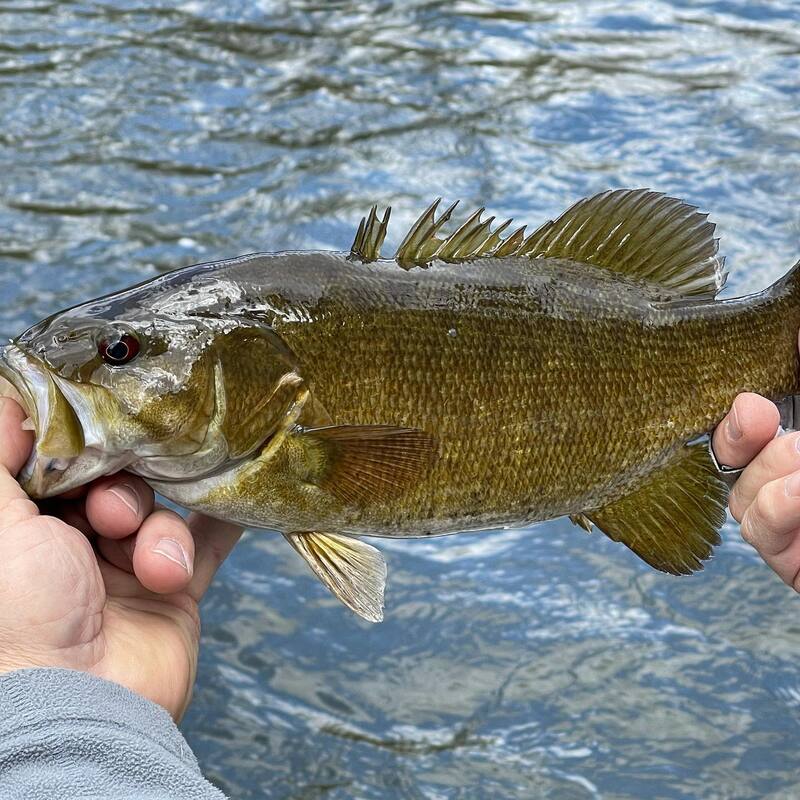



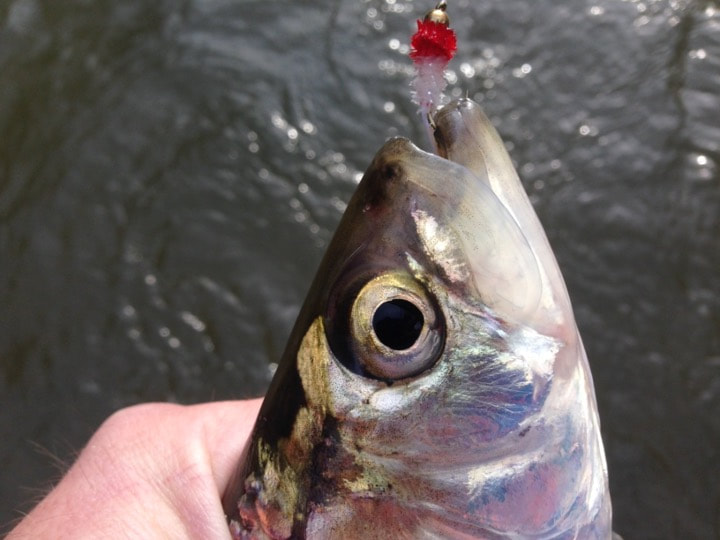


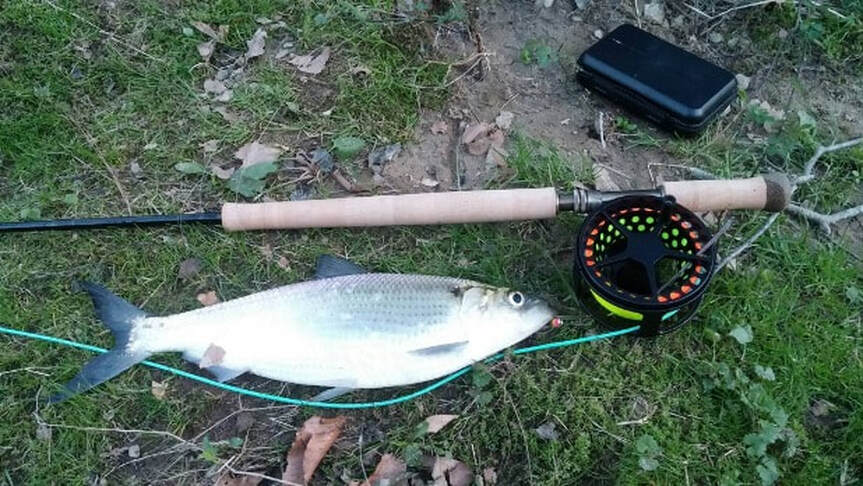






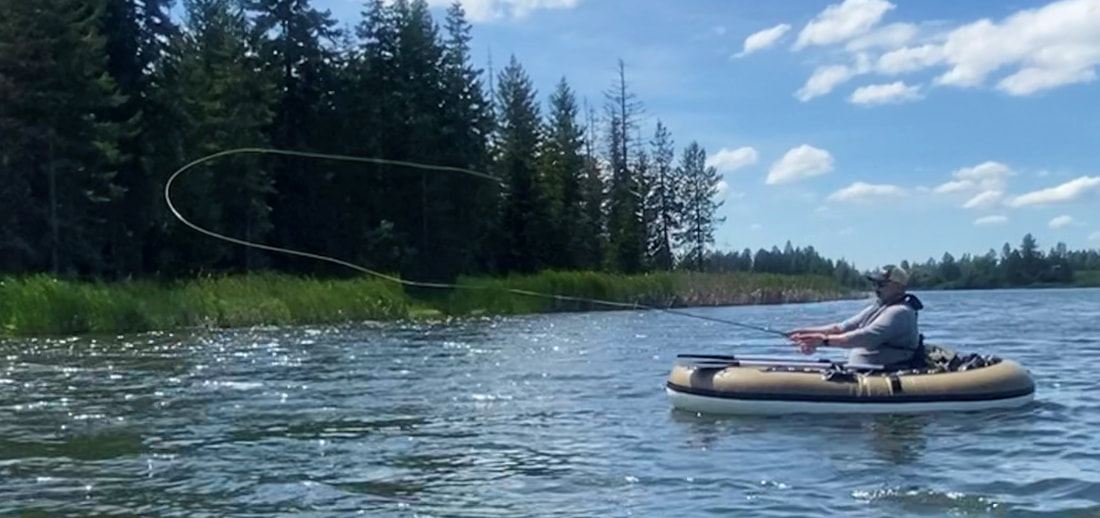
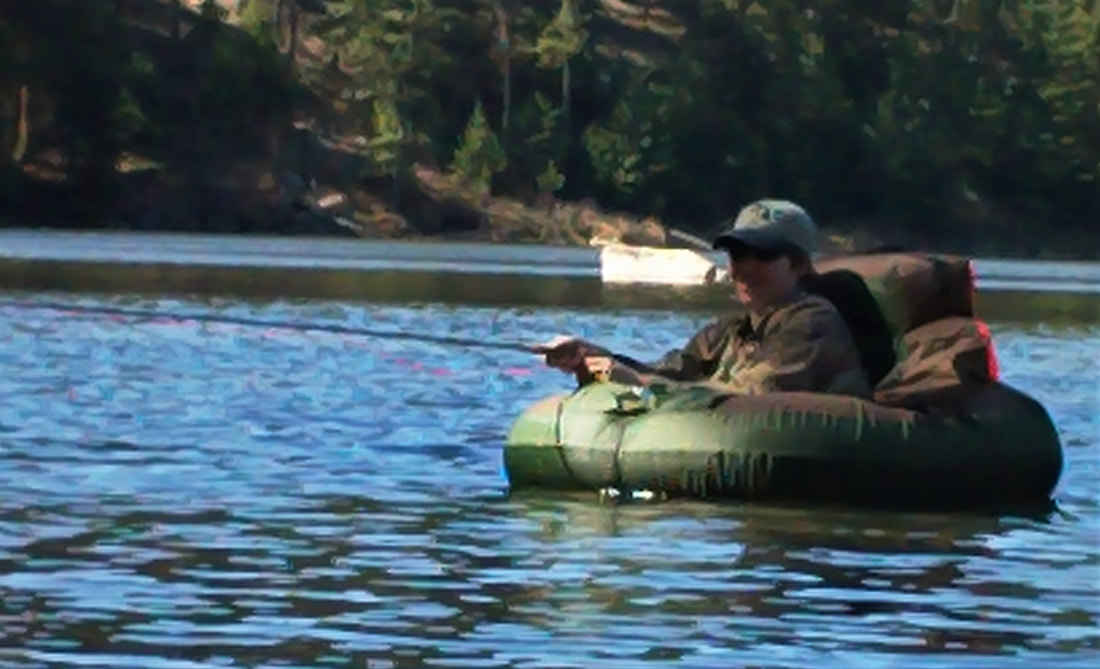

 RSS Feed
RSS Feed
